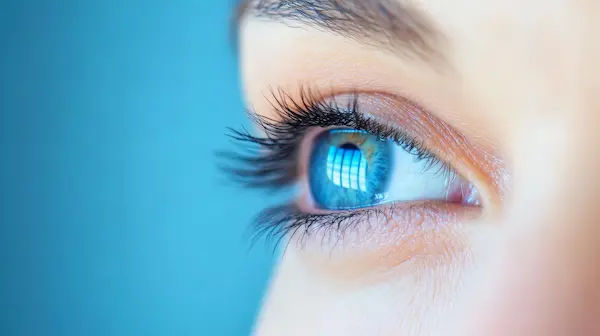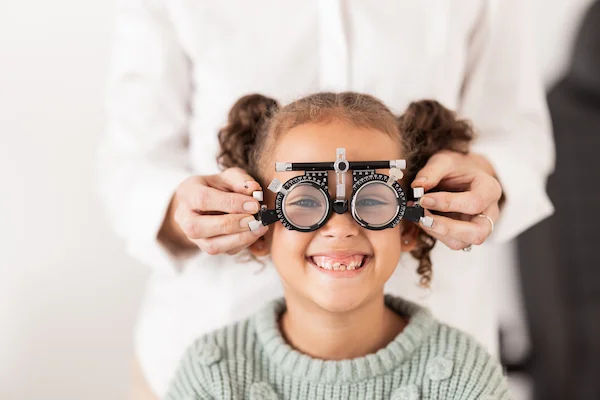How to Reduce Cylindrical Number?
Learn how to reduce cylindrical power in your eyes with effective treatments, lifestyle changes, eye exercises, and medical options for better vision health.

Written by
Last updated on 3rd Jul, 2025
Introduction
Cylindrical numbers, also known as astigmatism, are a common refractive error that can affect both near and distant vision. If you've ever struggled with blurred or distorted vision, there's a good chance you’ve experienced the effects of astigmatism. While this condition can be frustrating, the good news is that there are multiple ways to reduce or even eliminate cylindrical numbers and restore clear vision. In this comprehensive guide, we will explore effective methods for reducing cylindrical numbers, from corrective lenses to advanced surgical options.
What is a Cylindrical Number?
Cylindrical numbers, or astigmatism, occur when the curvature of the cornea (the clear, front part of the eye) or the lens inside the eye is irregular. Unlike a perfectly spherical shape, an astigmatic eye has a more oval shape, which causes light to focus on multiple points within the eye instead of a single point on the retina. This results in blurry, distorted vision at all distances, whether near or far.
Astigmatism is typically categorised by the degree of refractive error, from mild to severe. A higher cylindrical number indicates a stronger level of astigmatism and may lead to more noticeable vision problems. Fortunately, there are several options available to reduce or correct cylindrical numbers effectively.
Causes of Cylindrical Numbers
Understanding the causes can help determine the most suitable treatment plan for reducing cylindrical numbers.
Irregular Corneal Shape: The most common cause of astigmatism is an abnormal curvature of the cornea. A cornea that’s more football-shaped rather than round will cause light rays to bend in different directions, resulting in blurred vision.
Genetics: Astigmatism often runs in families. If you have parents or siblings with astigmatism, you may be at higher risk.
Eye Injury or Surgery: Trauma or previous eye surgeries, such as cataract removal, can alter the shape of the cornea, leading to astigmatism.
Keratoconus: This is a condition where the cornea becomes progressively thinner and more cone-shaped, leading to more severe astigmatism.
How to Reduce Cylindrical Number?
Here are some effective treatment methods, including:
1. Eyeglasses for Astigmatism
Eyeglasses are one of the most common ways to correct astigmatism. Specially designed cylindrical lenses are used to counteract the uneven curvature of the eye. These lenses help focus light directly onto the retina, improving both near and distant vision.
Pros:
Non-invasive and easy to wear.
Adjustable for different degrees of astigmatism.
It can be used in combination with other vision problems like nearsightedness or farsightedness.
Cons:
Some people find wearing glasses inconvenient for sports or physical activities.
They may not provide a wide field of view as compared to other treatments.
For mild to moderate astigmatism, eyeglasses are often the first line of treatment. Optometrists will customise the prescription based on the degree and axis of astigmatism to ensure clear vision.
2. Contact Lenses for Astigmatism
For those who prefer not to wear glasses, contact lenses can provide an effective solution to correct cylindrical numbers. There are different types of contact lenses designed specifically for astigmatism:
Toric Lenses: These are specially designed contacts that have different powers in different meridians of the lens to correct the uneven curvature of the cornea. They are available in both soft and rigid gas-permeable (RGP) materials.
Rigid Gas Permeable (RGP) Lenses: These lenses are highly effective for people with higher degrees of astigmatism. RGP lenses provide sharper vision than soft contacts because they maintain their shape better, which helps them focus light more precisely on the retina.
Hybrid Lenses: These lenses combine the comfort of soft lenses with the sharp vision of RGP lenses. They can be a good option for individuals who find RGP lenses uncomfortable but still need the precision they offer.
Pros:
Provide a wider field of vision than glasses.
Suitable for active individuals or those who play sports.
Many people find that contact lenses offer clearer vision compared to glasses.
Cons:
Require proper maintenance and cleaning.
Not everyone finds contacts comfortable, especially for those with dry eyes or sensitive corneas.
Contact lenses are a great option for people with moderate to severe astigmatism, as they help correct the shape of the eye's surface more precisely than glasses.
3. Laser Eye Surgery (LASIK and Contoura Vision)
For those who want a permanent solution to reduce cylindrical numbers, laser eye surgery can be an excellent option. LASIK (Laser-Assisted in Situ Keratomileusis) and its advanced version, Contoura Vision, are two of the most popular procedures used to treat astigmatism.
LASIK Surgery: LASIK involves reshaping the cornea using a laser to correct its curvature, which helps focus light directly onto the retina. The procedure is quick, minimally invasive, and usually painless. Most patients experience significant improvement in their vision shortly after surgery.
Contoura Vision LASIK: A more advanced form of LASIK, Contoura Vision uses topography-guided technology to create a detailed map of the cornea, allowing for highly personalised treatment. It offers more precise results than traditional LASIK and can be especially beneficial for people with irregular astigmatism.
SMILE Surgery: SMILE (Small Incision Lenticule Extraction) is a newer laser eye surgery technique for astigmatism. It is less invasive than LASIK because it requires only a small incision and does not involve creating a flap in the cornea.
Pros:
Quick recovery time.
High success rates in reducing or eliminating astigmatism.
A long-term solution that doesn’t require ongoing adjustments like glasses or contacts.
Cons:
Not everyone is a candidate for laser surgery (e.g., people with thin corneas or certain medical conditions).
The surgery can be expensive, and not all insurance plans cover it.
As with any surgical procedure, there are some risks involved.
Laser eye surgery is ideal for individuals with moderate to severe astigmatism who want a permanent solution to their vision problems.
4. Implantable Collamer Lenses (ICL)
For individuals who are not suitable candidates for LASIK or those with high levels of astigmatism, Implantable Collamer Lenses (ICL) may be a good alternative. These lenses are surgically implanted in the eye to correct vision problems. They are particularly effective for people with high refractive errors or thin corneas.
Pros:
Suitable for people with high degrees of astigmatism or nearsightedness.
Reversible procedure—if necessary, the lenses can be removed or replaced.
Does not alter the shape of the cornea, making it ideal for those with corneal issues.
Cons:
Requires surgery and comes with the risks associated with any surgical procedure.
More expensive than other options like LASIK.
ICLs offer a permanent solution for individuals with high astigmatism, providing clearer vision without the need for glasses or contacts.
5. Eye Exercises and Lifestyle Changes
While eye exercises are often marketed as a way to reduce astigmatism, there is no scientific evidence to support their effectiveness in curing or reducing cylindrical numbers. However, certain lifestyle changes can help manage astigmatism and prevent it from worsening:
Take Breaks from Screen Time: Prolonged screen use can contribute to eye strain and worsen vision problems. Practice the 20-20-20 rule: every 20 minutes, take a 20-second break and focus on something 20 feet away.
Get Regular Eye Checkups: Regular eye exams are essential to detect astigmatism early and ensure that corrective measures are taken to prevent further deterioration of vision.
Conclusion
Reducing cylindrical numbers, or astigmatism, is entirely possible with the right treatment plan. Whether through corrective lenses like glasses or contacts lenses, or more permanent solutions like LASIK surgery or implantable lenses, you have options available to restore clear vision. By consulting with an eye care professional, you can determine the best course of action based on your unique needs and the severity of your astigmatism.
Consult Top Ophthalmologist
Consult Top Ophthalmologist

Dr Rajesh Rastogi
Ophthalmologist
33 Years • MBBS, MS Ophthalmology
New Delhi
Rotary Diabetic Centre, New Delhi
Dr. Padmini S
Ophthalmologist
4 Years • MBBS,MS
Bengaluru
Apollo Medical Center, Marathahalli, Bengaluru
Dr. V.chittibabu
Ophthalmologist
30 Years • MBBS, MS
Vellore
Krupa Eye Clinic, Vellore
Dr. Akashdipta Saha
Ophthalmologist
4 Years • MBBS, MD(Ophthalmology), Fellowship in Retina & Vitreous
Delhi
AIIMS, Delhi
Dr. Harshavardhan Reddy
Ophthalmologist
3 Years • MBBS , MS (Ophthalmology)
Hyderabad
Ram Dev Rao Hospital, Hyderabad




